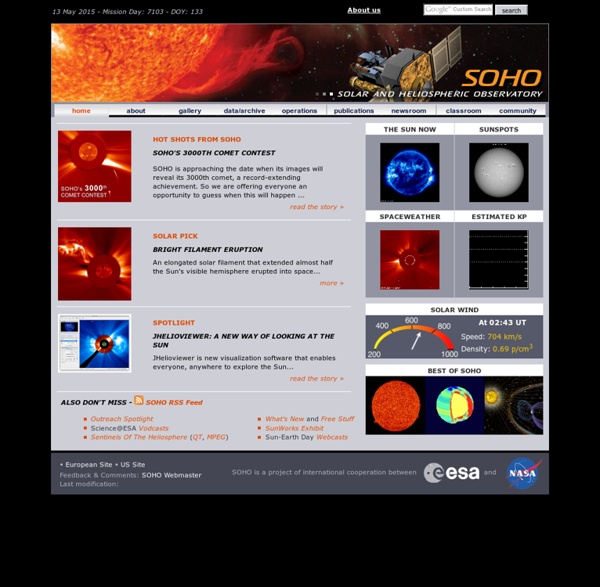



SOLARCYCLE 24.com / SolarHam.com / Solar Cycle 24 / Spaceweather / Amateur Radio VHF Aurora Website / Sunspots / Solar Flares For Students- Stanford Solar Center Activities for Students You cannot teach a man anything, you can only help him to find it for himself. -Galileo Galilei Tour through these topics to find exciting activities, images, interactive tools, text, and other resources to let you research our special star -- the Sun. Check out our new comics series! Design Your Own Solar Cupcakes! Build an SDO Hexaflexagon!
Geomagnetic storm severity info (K-Index) NOAA / Space Weather Prediction Center The K-index is a code that is related to the maximum fluctuations of horizontal components observed on a magnetometer relative to a quiet day, during a three-hour interval. The conversion table from maximum fluctuation (nT) to K-index, varies from observatory to observatory in such a way that the historical rate of occurrence of certain levels of K are about the same at all observatories. At SWPC, we monitor the preliminary values of the K-index, minute by minute, from a network of observatories that relay data in near-real time. The relationship between K, Kp, and estimated Kp The official planetary Kp index is derived by calculating a weighted average of K-indices from a network of geomagnetic observatories. Using minute-by-minute station K-indices, SWPC monitors the estimated Kp index in near real-time and issues alerts when thresholds are crossed. The relationship between K and A The relationship between the NOAA G-scale and Kp Limitations
Speed of the Earth's Rotation The Question (Submitted April 01, 1997) I am trying to find out the speed of the turning of the Earth. The Answer Basic Answer The circumference of the Earth at the equator is 25,000 miles. Multiply by cosine of your latitude to see how fast the Earth is rotating where you are. Earth is also moving around the Sun at about 67,000 miles per hour. Advanced Answer If by "turning" you mean the rotation of the Earth about its axis (where axis just means the straight line between the North and South poles) it is quite easy to figure out how fast any part of the Earth's surface is moving. The Earth rotates once in a few minutes under a day (23 hours 56 minutes 04. 09053 seconds). An object on the Earth's equator will travel once around the Earth's circumference (40,075.036 kilometers) each sidereal day. The Earth is doing a lot more than rotating, although that is certainly the motion we notice most, because day follows night as a result.
SECCHI - Solar Physics Branch - Naval Research Laboratory STEREO